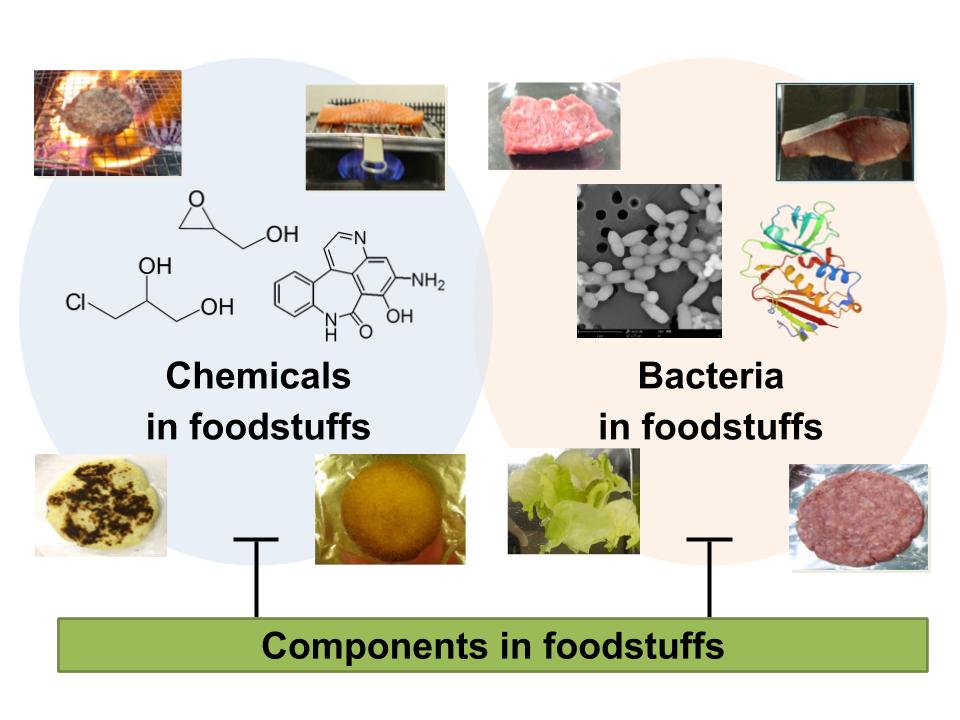Food Hygiene

- account_circleShuichi MasudaPhD, Prof.
- account_circleYuko ShimamuraPhD, Research Asst. Prof.
- Website:https://dfns.u-shizuoka-ken.ac.jp/labs/foodhygn/
- Mail:masudas@u-shizuoka-ken.ac.jp
- Phone:+81-54-264-5528
Risk assessment of chemicals and food poisoning bacteria in foodstuff
Estimating of food safety linked to maintaining a healthy lifestyle
- 1. Safety assessment and risk analysis of chemical substances in the food environment
We have elucidated the formation mechanism, mutagenicity and in vivo behavior of chemical substances in foods (acrylamide, glycidol fatty acid ester, heterocyclic amine, etc.) and evaluated the risk of these substances to humans.
- 2. Development of novel control methods to reduce food-poisoning
For the purpose of establishing the control methods for food poisoning, we analyze the toxin production and toxin activity of Staphylococcus aureus and the pathogenic expression via membrane vesicles produced by the bacteria. In addition, we search for food ingredients that suppress these factors that induce biological effects.
- 3. Changes in biological effects due to combined exposure to chemical and biological risk factors in food
We investigate whether each toxicity of chemicals and bacterial change when these both risk factors are simultaneously exposed and elucidate the mechanism of these actions.
- Figure 1
- Approach from Chemical and Bacterial Risk Factors of Food

- Figure 2
- The Sources of Chemicals and Bacteria Contaminants and Control of Their Health Hazards

References
- Toxics, 8, 119 (2020)
- Molecules., 25(8), 1867 (2020)
- J. Food Prot., 83(6), 928-934 (2020)
- Food Sci. Technol. Res., 26(6), 825-835 (2020)
- J. Clin. Biochem. Nutr., 20-83, 1-7 (2020)